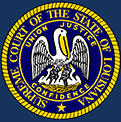 |
Sitting Locations of the Louisiana Supreme Court
Government House
Home of the Louisiana Supreme Court from 1813-18**
Architectural Model of the Government House of the French Colony of Louisiana
Model built by Thompson & Foster c. 1933
Louisiana State Museum
The State of Louisiana’s Supreme Court first convened at Government House on March 1, 1813 and was composed of judges Dominick A. Hall, George Mathews and Pierre Derbigny. The Government House of the French Colony of Louisiana, home of the French Superior Council, was built in 1761 at Toulouse and Decatur Street in the French Quarter, about 200 feet from the Mississippi River. After statehood, the Government House was occupied by the Louisiana Legislature and then became the Louisiana State Capitol until it burned in 1828. |
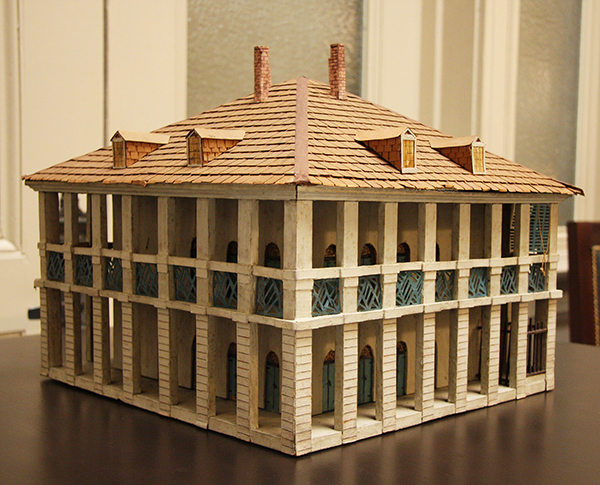 |
The Presbytère
Home of the Louisiana Supreme Court from 1822 - April 1853
The Presbytère, originally called the Casa Curial (Ecclesiastical House), derives its name from the fact that it was built on the site of the residence, or presbytère, of the Capuchin monks. It was designed in 1791 to match the Cabildo, or Town Hall, on the other side of St. Louis Cathedral. As with the Cabildo and the Cathedral, construction was financed by philanthropist Don Andres Almonester y Roxas. The second floor, however, was not completed until 1813, when the Wardens of the Cathedral assumed responsibility for the final phase. The building initially was used for commercial purposes until 1834 when it became a courthouse. In 1847 the structure's mansard roof was added. The Presbytère was then used by the city as a courthouse until 1911 when it became part of the Louisiana State Museum. |
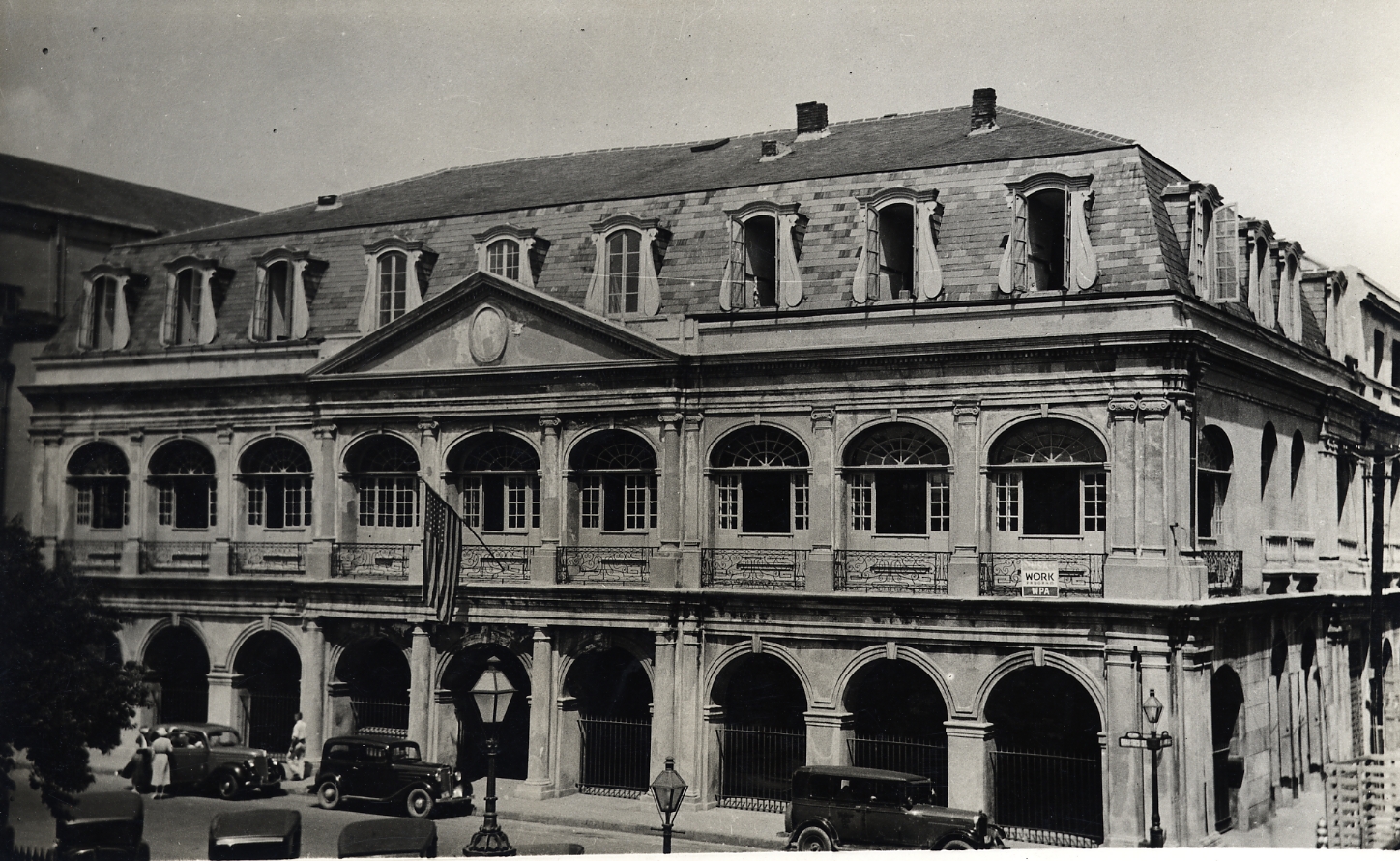 |
The Cabildo
Home of the Louisiana Supreme Court from 1853-1910
The Cabildo was built under Spanish rule from 1795-1799 and named after the municipal governing body that was located there. In 1803, the Cabildo was the site of the Louisiana Purchase transfer, the event that acquired the Louisiana Territory for the United States, doubling its land-area. The Cabildo served as New Orleans City Hall until 1853 when it became the headquarters of the Louisiana State Supreme Court and saw the landmark Slaughterhouse and Plessy vs. Ferguson decisions. The Louisiana Supreme Court met in the 2nd floor Sala Capitular (or meeting room) in the Cabildo from 1853 until 1910 (except during the Civil War years). The Sala Capitular was on the 2nd floor of the Cabildo on the corner of Chartres and St. Peter Streets. When the Louisiana Supreme Court justices were on the bench in that room, they faced toward Royal Street. |
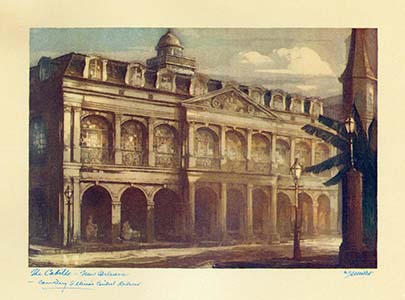 |
Civil Courts Building, 400 Royal Street
Home of the Louisiana Supreme Court from 1910-1958
The courthouse was designed by Frederick and Ten Eyck Brown of the Brown, Brown and Marye architecture firm in Atlanta, Georgia. This new courthouse was designed in the Beaux Arts style, and contains about 160,000 square feet and a basement. The Courthouse opened for business on October 1, 1910. |
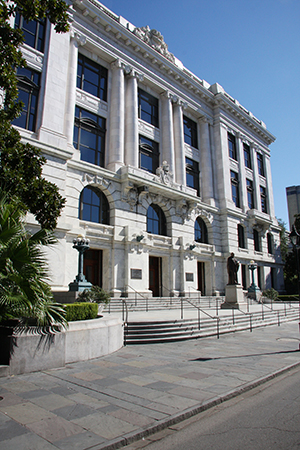 |
301 Loyola Avenue
Home of the Louisiana Supreme Court from 1958-2004
The Civil Courts Building on Royal Street had deteriorated severely, and the building was judged to be condemned in 1935. During the 1950's there was significant development of the present Civic Center Complex near the corner of Loyola Avenue and Poydras Street. In 1958 the Louisiana Supreme Court moved to a much more modern building at 301 Loyola Avenue in the Duncan Plaza Civic Complex. |
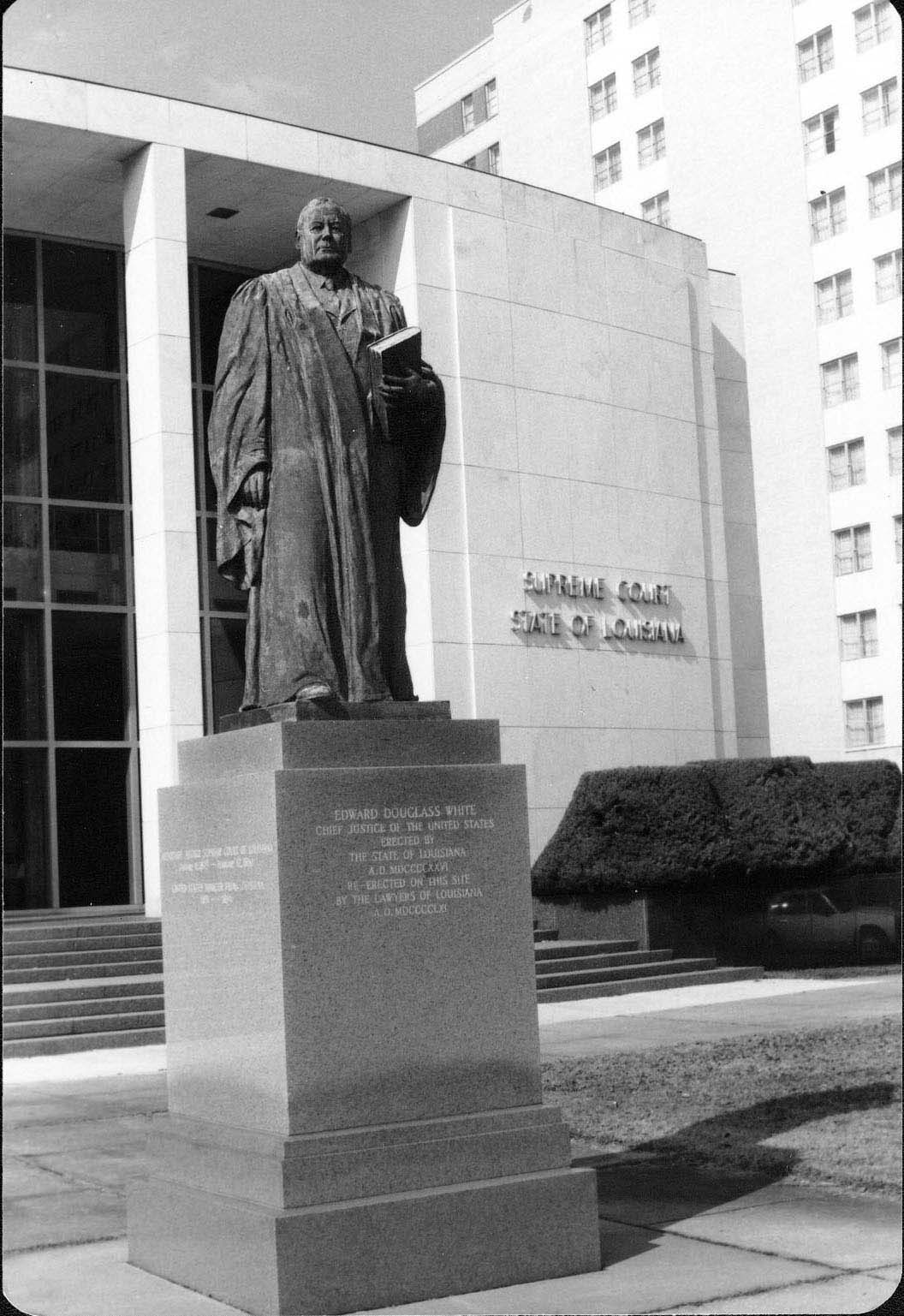 |
400 Royal Street
Home of the Louisiana Supreme Court from 2004-Present
In 1991 Pio Lyons was chosen as the architect for the renovation, which was completed in 2004. The courthouse serves as seat to the Louisiana Supreme Court, the Fourth Circuit Court of Appeal, the Law Library of Louisiana, and the Judicial Administrator's Office. |
 |
Courtrooms of the Louisiana Supreme Court
The Cabildo
(1901)
Image courtesy of the Collections of the Louisiana State Museum. |
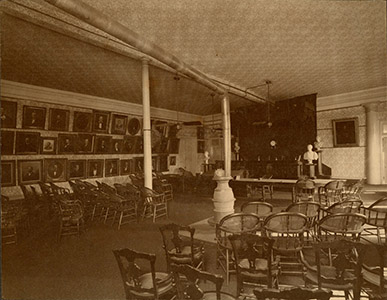 |
400 Royal Street
(present day) |
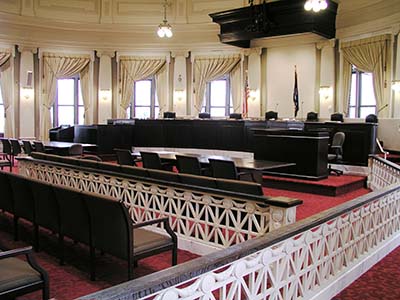 |
Photos of Previous Benches
1879 Court
|
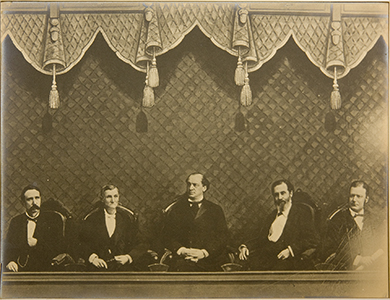 |
1913 Court
|
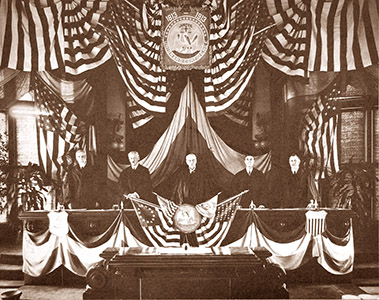 |
|
|
